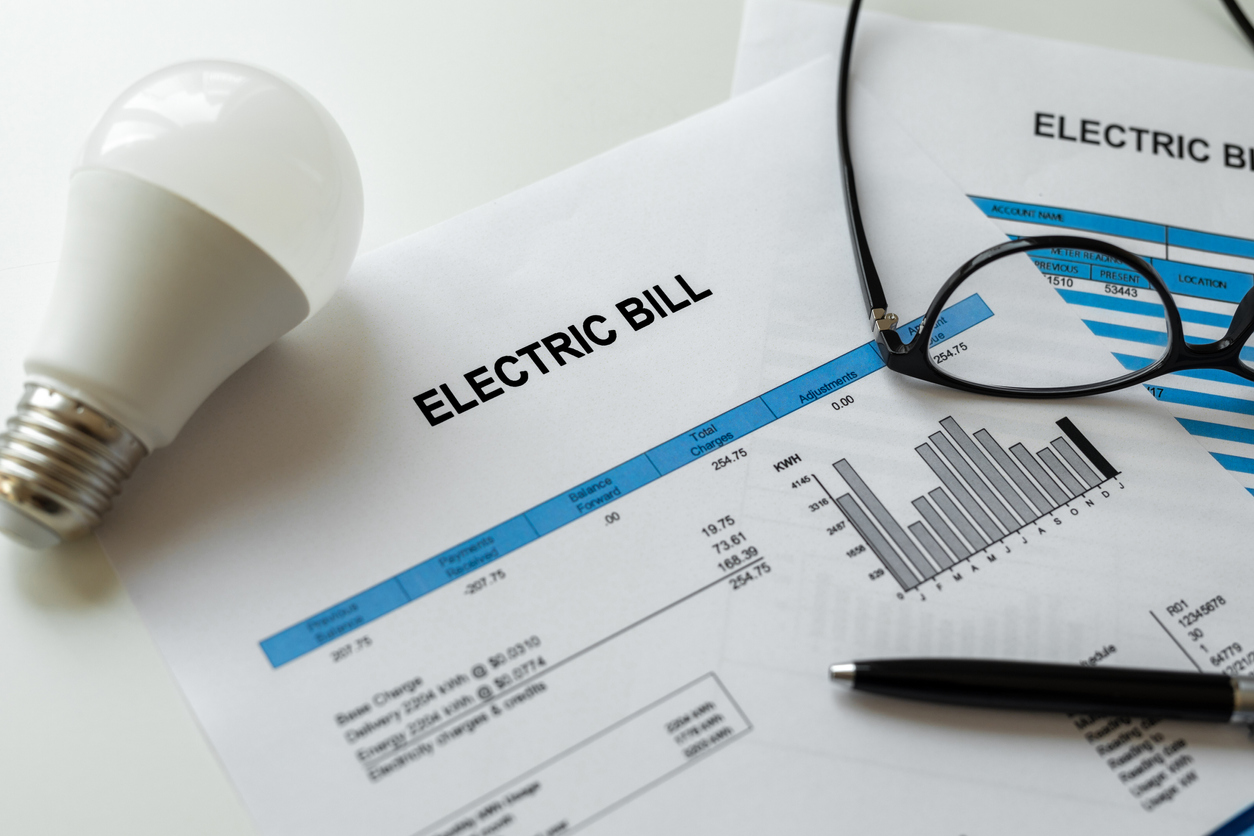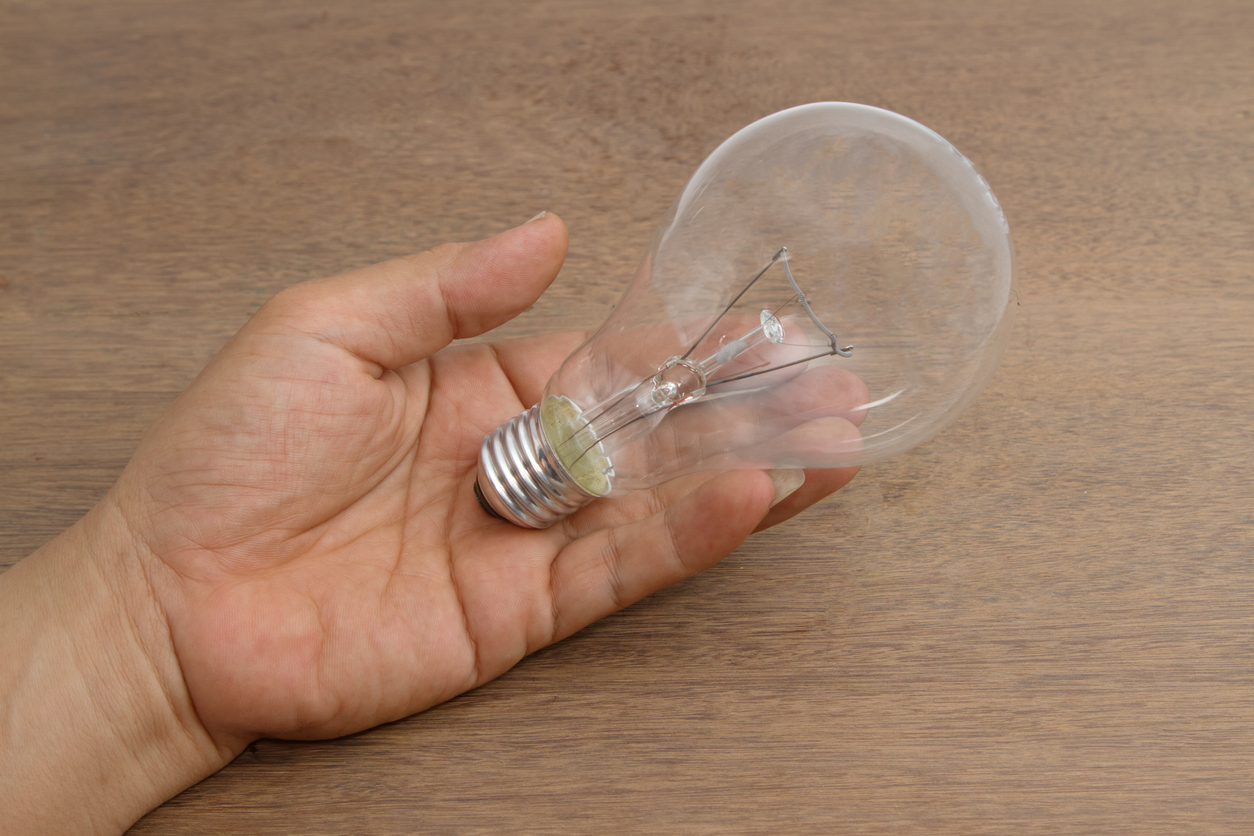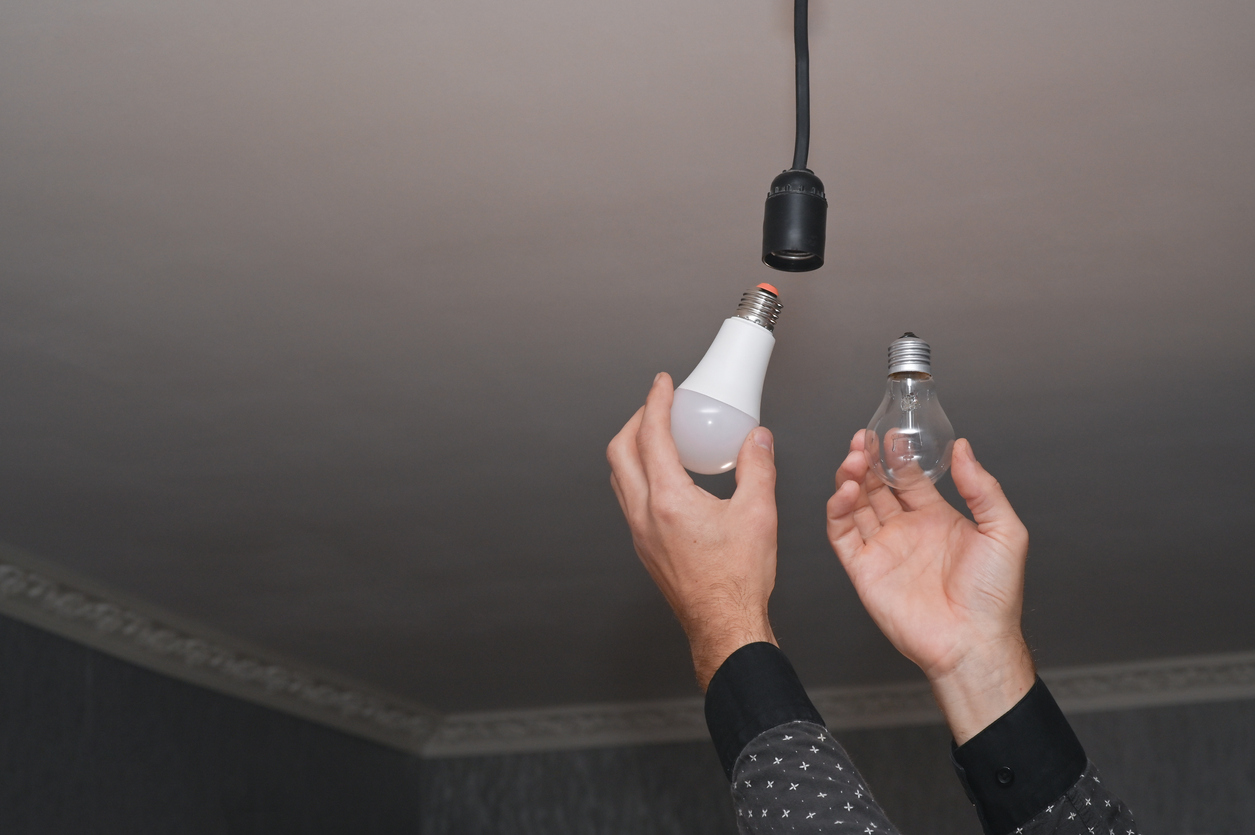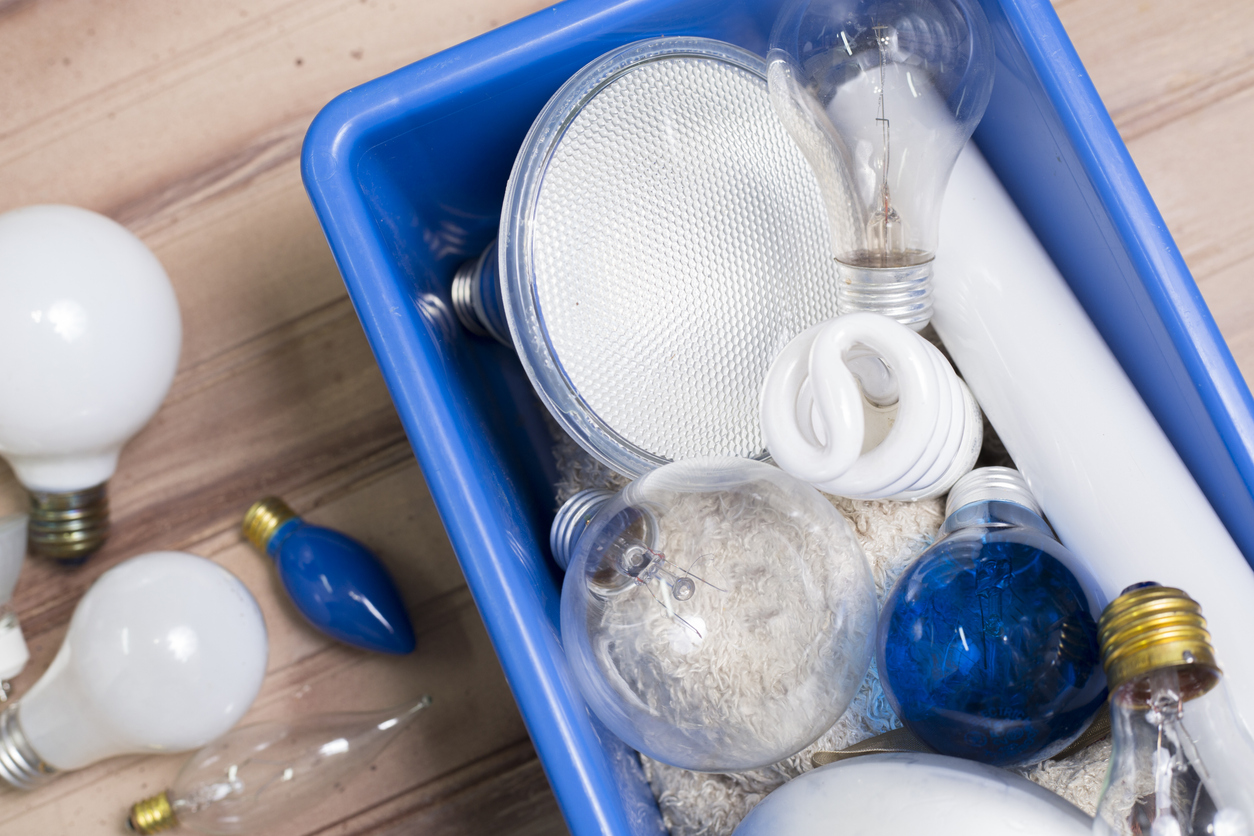

We may earn revenue from the products available on this page and participate in affiliate programs. Learn More ›
If you have been in a lighting or hardware store recently, you may have noticed something missing—incandescent light bulbs. These are the types of bulbs we have been using since the days of Thomas Edison, and they’re what most of us envision when we think of a light bulb. They work by incandescence, which is the emission of light caused by heating a filament (the wire inside the glass bulb). The heat they emit uses a lot of energy. In fact, only 2 to 3 percent of the electricity powering the bulb is actually converted to visible light.
As of August 1, 2023, incandescent light bulbs (with some exceptions) are no longer being manufactured or sold in the United States. This is because they do not meet the new efficiency standard of producing 45 lumens per watt, a measure of brightness. Keep reading to learn the history of the incandescent light bulb ban and what the ban means for you and your home.
RELATED: The Best Flame Light Bulbs
Why are incandescent bulbs being banned?
The incandescent light bulb ban has been in the works since 2007, when Congress passed the Energy Independence and Security Act (EISA). The law required that the Department of Energy (DOE) assess light bulb efficiency standards. Ultimately, the government set the standard efficiency at 45 lumens per watt. As most incandescent light bulbs produce only 15 lumens per watt, this standard effectively banned most incandescent light bulbs.
The goal of the new standard is to conserve energy, reduce greenhouse gas emissions, and help consumers save money on utility bills. Fortunately, new technologies, including light-emitting diodes (LEDs), have really taken off in recent years, making it easier and more affordable for people to make the switch. Additionally, the market has already been shifting on its own. In the first quarter of 2022, less than 20 percent of light bulb sales were incandescent lighting, according to the National Electrical Manufacturers Association.
RELATED: 12 Ways to Put Your Home on an Energy Diet
What kind of environmental and financial impact will the ban have?

Not only will banning incandescent light bulbs save energy and reduce carbon emissions, but it will also help save Americans money. By raising emissions standards for light bulbs, the DOE estimates that consumers will save about $3 billion each year on utility bills.
The ban also helps meet the government’s climate goals. The Appliance Standards Awareness Project estimated that each month of delay in implementing the incandescent light bulb ban would account for the emission of about 800,000 additional tons of carbon dioxide into the atmosphere. But with the ban, carbon emissions will be cut by 222 million metric tons over the next 30 years, an amount that is equivalent to the emissions of 28 million homes in just 1 year.
RELATED: Slash Your Electric Bill with 11 Savvy Hacks
Which types of bulbs are part of the ban?

Light bulbs that produce less than 45 lumens per watt are affected by the ban. In addition to pear-shaped A-type bulbs, the new efficiency standard also impacts reflector bulbs used in recessed and track lighting, globe-shaped bulbs often installed in bathrooms, and candle-shaped bulbs used in wall fixtures and other decorative light fixtures. The standards will eventually phase out most incandescent and halogen light bulbs and shift the market to LED and compact fluorescent bulbs (CFLs) instead.
RELATED: We Tested Best LED Light Strips for Illuminating Any Location, See Our Favorites
Are there exceptions to the ban for specific bulbs?
There are a number of types of incandescent light bulbs that are not impacted by the ban. These include the following:
- Appliance lamps, including fridge and oven lights
- Black lights
- Bug lamps
- Colored lamps
- Flood lights
- G shape (i.e., globe) lamps with a diameter of 5 inches or more
- Infrared lamps
- Left-handed thread lamps
- Marine lamps
- Mine service lamps
- Plant lights
- Reflector lamps
- Rough service lamps
- Showcase lamps
- Shatter-resistant lamps (including shatter-proof and shatter-protected)
- Sign service lamps
- Silver bowl lamps
- T shape lamps that use no more than 40W or are longer than 10 inches
- Traffic signals
- Vibration service lamps
- B, BA, CA, F, G16-1/2, G-25, G-30, M-14, or S lamps of 40W or less
If you have incandescent bulbs in your home, do you have to get rid of them?
No, nobody is coming to take your current light bulbs away. The ban pertains only to manufacturers producing incandescent bulbs and retailers selling them. You can continue to use the incandescent lights you already have in your home, including holiday lights. Just keep in mind that they have a much shorter life span than LEDs, so when it is time to replace them, you will be replacing them with longer-lasting bulbs. Plus, nearly half of American households are already using LED bulbs for most or all indoor lighting, according to the U.S. Energy Information Administration, so this should not be a major inconvenience.
RELATED: 10 Energy-Saving Myths You Shouldn’t Believe
What kind of bulbs can we get instead?

Given their high efficiency and wide availability, LEDs are the preferred replacement for incandescent bulbs. LEDs use semiconductor technology to provide illumination, and they use 85 percent less energy than incandescents and 50 percent less than CFLs to produce the same amount of light. They also provide precise color quality and come in a range of color temperatures from soft ambient to daylight. While they used to be pricier than other types of bulbs, their cost has dropped in recent years.
Additionally, because they use less energy and are more efficient, they help save money and last about 25 times longer than other bulbs. Swapping out your lighting is simple: Just look for the correct-fitting bulbs that will provide the desired amount of brightness, measured in lumens. For instance, a typical 60-watt incandescent bulb produces 800 lumens, so you’ll want a replacement LED of similar brightness (most likely an LED of about 9 watts).
RELATED: The Best LED Ceiling Lights
Are more lighting bans coming?

Yes. The DOE is currently working on raising the energy efficiency standard for light bulbs to 120 lumens per watt, more than double the current requirement. This would result in moving away from CFLs as well. The new standard is expected to go into effect by the end of 2024, so stay tuned.
